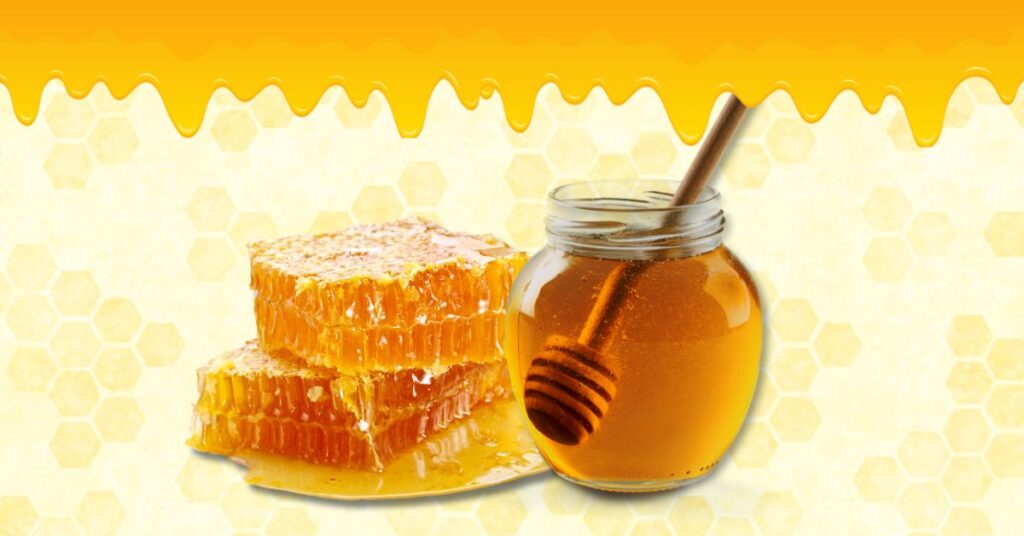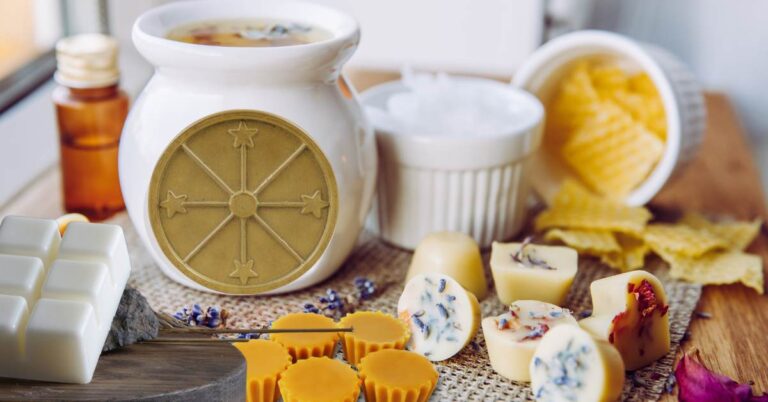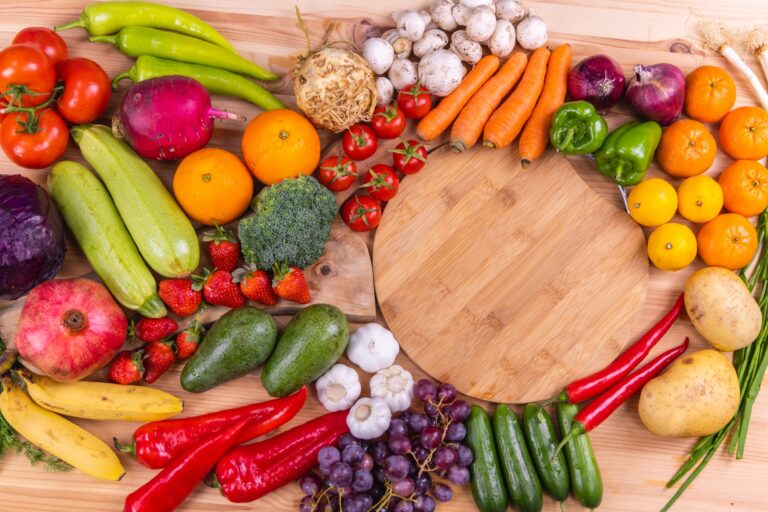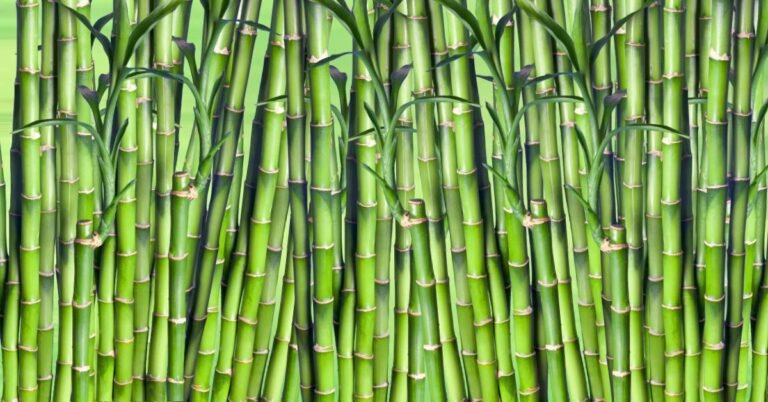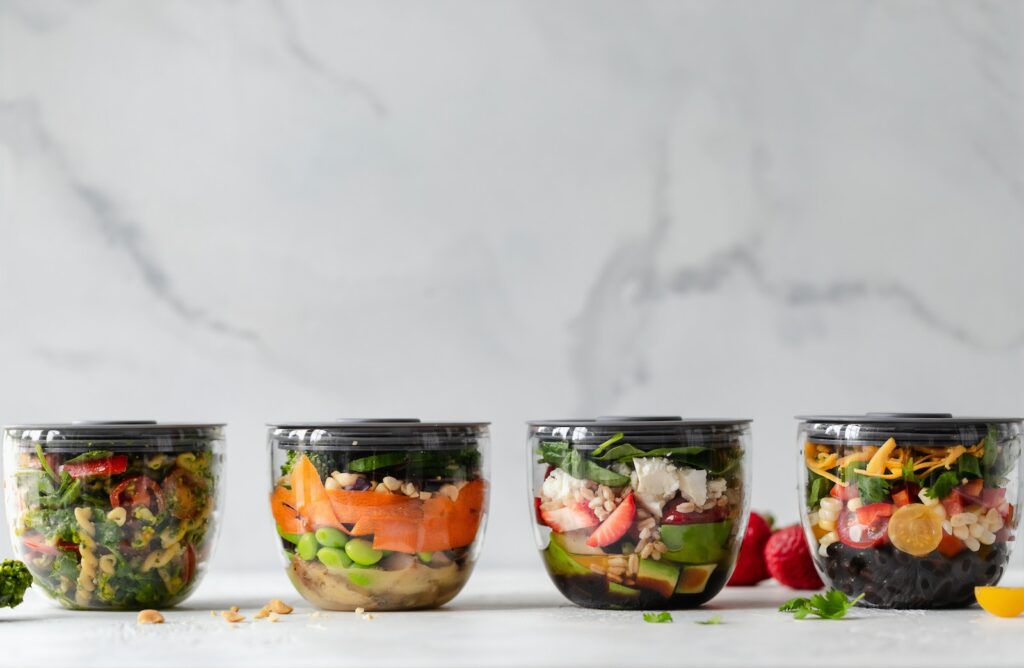Why Should You Care About the Type of Honey?
Honey is more than just a sweetener—it’s a gift from nature with a treasure of health benefits. Choosing the right type of honey, be it raw unfiltered honey vs organic honey, can be a game-changer for your well-being.
In this article, you’ll get the insider scoop on the impact of raw, unfiltered, organic, and pure honey on your health. I’ll guide you through the sticky aisles of honey options, from the local farmers’ markets to the grocery store shelves. I’ll help you decipher what those labels mean and suggest some of our favorite honey brands, including the best organic honey. Get ready to discover how the right kind of honey can soothe your throat, fortify your immune system, and enhance your antioxidant intake.
This post may contain some affiliate links. If you purchase through them, we can earn a small commission. Learn more about it here.
- Why Should You Care About the Type of Honey?
- The Alchemy of Bees: How is Honey Made?
- Why do Bees Make Honey?
- What are the Different Types of Honey?
- What is Local Honey?
- How is Honey Pasteurized?
- How is Honey Filtered?
- What's the Difference Between Filtering and Pasteurizing?
- What are the Health Benefits of Raw Honey?
- What is Monofloral Honey?
- Who Shouldn't Eat Honey?
- What is the Shelf Life of Honey?
- How Can I Liquify my Crystalized Honey?
- Can I Use it Crystalized?
- How Can I Make Sure I am Buying Real Honey?
- So, Which Jar of Honey Should I Choose?
- Our Favorite Honey Brands
The Alchemy of Bees: How is Honey Made?
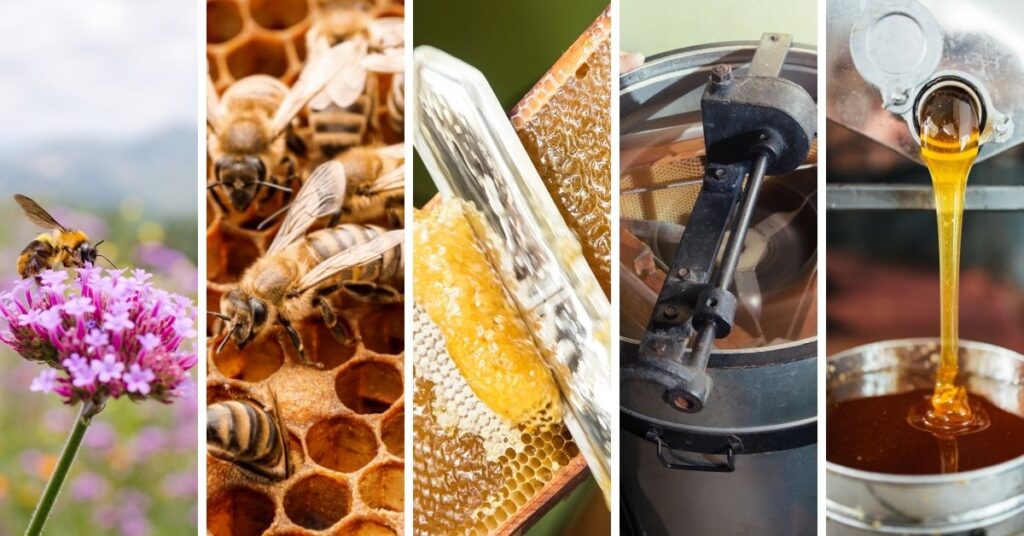
If you’re like me, you love the taste of honey, but have you ever wondered how it’s made? Honey begins with a single bee visiting up to 1,500 flowers in one day. The bee’s tireless work involves sipping the nectar of flowers and storing it in its special honey stomach, where enzymes begin the transformation process. The bee’s honey stomach is separate from the bee’s actual stomach, where digestion takes place.
Back at the hive, the bee transfers the nectar through the mouths of multiple bees, progressively breaking it down into simple sugars. This concoction is then deposited into honeycomb cells, where the constant flutter of bee wings fans it into a thick syrup. Once perfected, the bees seal the cell with a wax cap, and there you have it—honey is made.
Typically, a bee colony can yield around 55 pounds of excess honey (unneeded by the bees) annually. To harvest the honey, beekeepers remove the honeycomb frames and then scrape away the wax cap bees use to enclose the honey in each cell. After uncapping, they put the frames into an extractor, a type of centrifuge, which spins them and causes the honey to be expelled from the comb. (Source: National Honey Board)
Why do Bees Make Honey?
Bees make honey primarily as a food source for themselves, especially when fewer flowers are available from which to collect nectar, such as during the winter. The honey provides essential nutrients to the bees in the hive, including carbohydrates for energy and small amounts of vitamins, minerals, and antioxidants.
What are the Different Types of Honey?
Standing in the honey aisle faced with labels like “pure,” “natural,” and “raw” can be daunting. Raw unfiltered honey vs organic honey? Raw unfiltered vs. raw filtered? What does it all mean? Let’s try to break it down:
What is Pure Honey?
A jar labeled as “pure” honey typically means that it’s real honey that hasn’t been mixed with other substances, like high fructose corn syrup or added sugars. This type of honey usually undergoes pasteurization and filtration to eliminate debris. While the final product is entirely honey, the “pure” label doesn’t provide detailed information about the production process.
What is Regular Honey?
Regular honey is filtered, pasteurized honey that might include additives such as corn syrup. With regular honey, there is no guarantee that it is 100% honey.
What is Raw Unfiltered Honey?
Raw unfiltered honey is honey as it exists in the beehive or as obtained by extraction without adding heat. It is unfiltered and unpasteurized, containing natural components like bee pollen, beeswax, and sometimes bee parts. Raw unfiltered honey may appear cloudier or contain small particles or flecks due to these natural inclusions.
Compared to processed honey, it retains pollen, propolis, natural enzymes, vitamins, amino acids, and antioxidants. These attributes make raw honey popular among health enthusiasts and those seeking more natural, less processed food options. Raw unfiltered honey can be either organic or non-organic. Raw unfiltered and Manuka (see below) are my two favorite kinds of honey.
What is Raw Filtered Honey?
Raw filtered honey is unpasteurized honey that has undergone a filtration process to remove larger impurities like bee parts and wax while retaining its raw status. This ensures that its natural enzymes, pollen, and nutritional properties are largely preserved. The filtration makes the honey clearer and more liquid than unfiltered raw honey, but it still maintains the beneficial characteristics typically associated with raw honey. Raw filtered honey can be either organic or non-organic.
What is Manuka Honey?

Manuka honey is a unique type of honey native to New Zealand, produced by bees that pollinate the Manuka bush (Leptospermum scoparium). Its strong antibacterial properties set Manuka honey apart, primarily due to methylglyoxal (MGO), a compound not found in such high levels in other types of honey.
Manuka honey is often used for medicinal purposes, like treating wounds, burns, and skin infections, and is believed to have anti-inflammatory and antimicrobial properties. Manuka honey is graded with a Unique Manuka Factor (UMF) rating, which indicates its quality and the concentration of beneficial compounds.
Manuka honey can be raw or pasteurized. The best manuka is organic honey, raw and unfiltered.
What is Organic Honey?
Certified organic honey is produced from the nectar of plants grown without chemical pesticides, herbicides, or fertilizers. The beekeeping practices used to make organic honey must meet specific organic standards and regulations. In the United States, the USDA’s National Organic Program (NOP) outlines specific requirements that beekeepers must follow for their honey to receive organic certification.
These standards also include the health and treatment of the bees and the management of the land where the hives are located. This ensures that the honey is produced in an environmentally sustainable way and free from contamination with chemicals typically used in conventional agriculture.
Organic honey is often sought after for its purity and natural production methods. Organic honey can be pasteurized, raw, raw unfiltered, or Manuka. I consider raw, unfiltered, or manuka the best organic honey choices.
What is Natural Honey?
Natural honey typically refers to honey that is minimally processed and doesn’t contain any artificial additives or ingredients. However, “natural” isn’t strictly regulated, so its meaning can vary. Generally, natural honey is expected to be pure honey, but it might have undergone some processing like filtering or heating.
It’s important to note that “natural” on a label doesn’t necessarily mean the honey is organic or raw, as these terms have more specific definitions and standards. In “natural” honey, you might occasionally find ingredients that are still considered natural but are additions to the pure honey, like natural flavors or natural sweeteners.
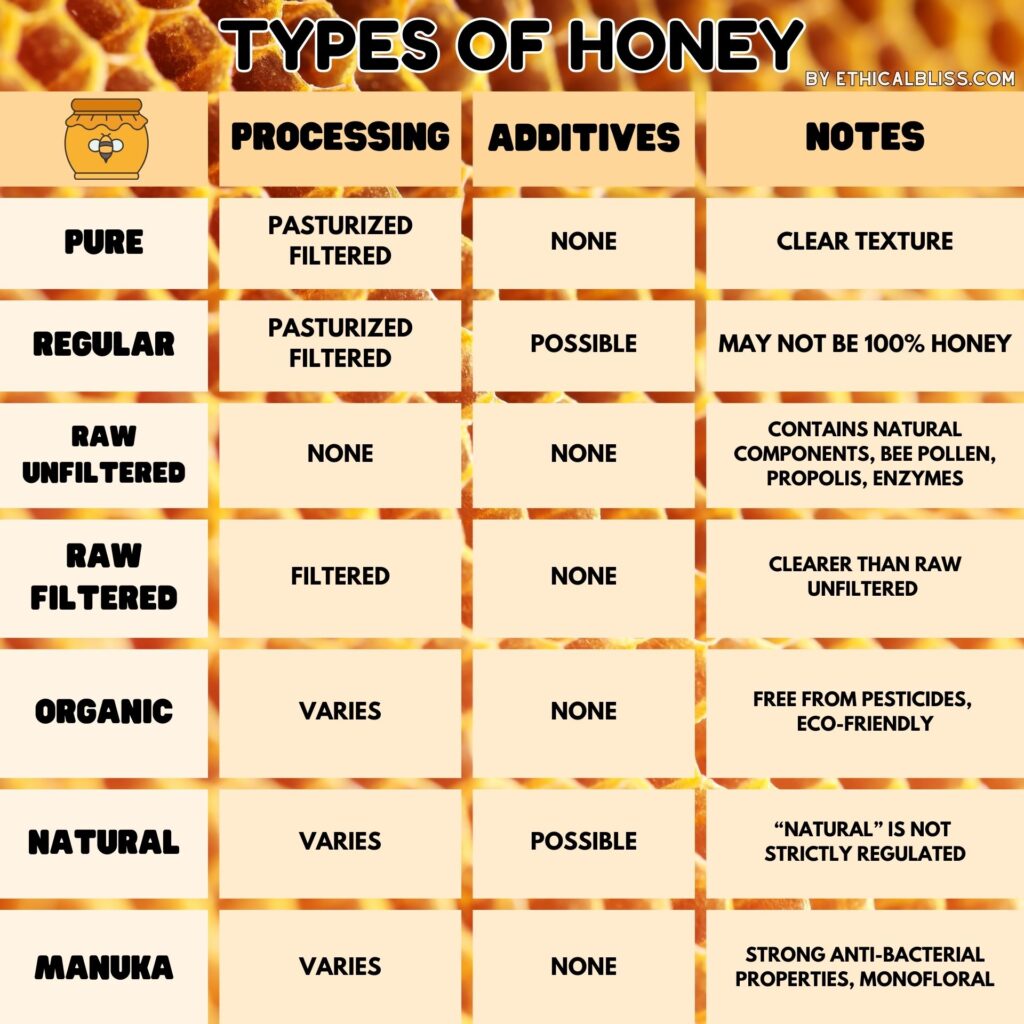
What is Local Honey?
Local honey refers to honey produced by bees in a particular region or locality, typically within a certain radius of where it is sold or consumed. This honey is often sourced from local beekeepers, sold at local farmers markets, and valued for its freshness and support of local agriculture.
One of the unique aspects of local honey jars is that their flavor and properties can vary depending on the specific flowers and plants that the bees in that area have pollinated, giving them a distinct taste that reflects the local flora. Additionally, local honey may help with allergies, as it contains pollen from local plants.
Local honey can be raw or pasteurized. It can also be organic.
How is Honey Pasteurized?
Honey is pasteurized by heating it to high temperatures to kill any yeast cells that might cause fermentation, extend shelf life, and make it smoother and more translucent. This process also helps prevent crystallization, making the honey stay liquid for longer. However, pasteurization can reduce some of the beneficial nutrients and enzymes in raw honey. So, while still sweet and flavorful, pasteurized honey may not contain the same antioxidants and antibacterial properties as raw honey.
How is Honey Filtered?
Honey is filtered by removing impurities like beeswax, bee parts, and other debris while retaining the honey’s natural properties. This filtering process typically uses a fine mesh or a special filter. This can vary in intensity; some honey is lightly filtered to keep most of the pollen, while others are more thoroughly filtered for a clearer appearance.
The filtration process aims to improve the honey’s clarity and texture without significantly altering its taste or nutritional value. High-quality filters are designed to remove unwanted particles while preserving beneficial components like pollen and enzymes in raw honey. No heat is used in filtering honey.
What’s the Difference Between Filtering and Pasteurizing?
The main difference between filtering and pasteurizing is the use of heat. Filtering involves using a mesh filter without heat, while pasteurization involves high heat. So, filtering is more of a manual process where the raw honey is passed through the filter, and pasteurizing is a thermal process.
What are the Health Benefits of Raw Honey?
There are many ways raw honey can contribute to wellness and healing. Here are some key advantages of incorporating raw honey into your diet:
- Antioxidants: Raw honey contains plant chemicals that act as antioxidants, which may protect the body from cell damage due to free radicals.
- Anti-inflammatory Effects: The polyphenols in raw honey have anti-inflammatory effects, potentially protecting against conditions associated with oxidative stress.
- Nutritional Benefits: Raw honey contains micronutrients like calcium, magnesium, manganese, niacin, pantothenic acid, phosphorous, potassium, riboflavin, and zinc.
- Source of Amino Acids, and Enzymes: It includes varying amounts of beneficial amino acids and enzymes.
- Antifungal and Antibacterial Properties: Propolis in raw honey has these properties, which are significant for both internal and topical treatments.
- Wound Healing: Studies suggest honey, propolis, and royal jelly benefit microbial inhibition and wound healing.
- Phytonutrients: These compounds are responsible for honey’s antioxidant properties, antibacterial and antifungal power and are linked to immune-boosting and anticancer benefits.
- Digestive Health: Honey may help with digestive issues like diarrhea and stomach ulcers and contains prebiotics beneficial for intestinal health.
- Sore Throat Remedy: It’s used for soothing sore throats and coughs during upper respiratory tract infections.
- Cognitive Benefits: Polyphenols in honey may help counter inflammation in the brain, benefiting brain health.
(Source: Healthline)

Help me get started!
Do you want to live a less-toxic, more eco-friendly lifestyle but have no idea where to begin? Here’s our “Non-Toxic 101” guide to get you started today!

What is Monofloral Honey?
Monofloral honey is produced from the nectar of a single type of flower, giving it a distinct flavor, aroma, and color unique to that plant. Unlike multifloral honey, which comes from various plants, monofloral varieties like the famous Manuka honey have specific characteristics and potential health benefits linked to their floral source. Beekeepers create monofloral honey by placing hives near large sources of the target flower, resulting in honey with unique and often more valued qualities.
Who Shouldn’t Eat Honey?
Some groups should avoid or be cautious when consuming honey, including:
- Infants: Honey should not be given to infants under one year old due to the risk of infant botulism (clostridium botulinum). (Source: American Heart Association)
- People with Diabetes: Diabetics should exercise caution due to honey’s sugar content. (Source: WebMD)
- Sugar and Calorie Watchers: Individuals watching their sugar and calorie intake should consume honey in moderation. (Sources: Medical News Today and American Heart Association)
What is the Shelf Life of Honey?
Honey has an impressive shelf life and can remain good for many years if not decades, when stored properly. Its low moisture content and high acidity naturally inhibit bacterial growth.
While honey may crystallize or change color over time, these are normal changes that don’t make consumption unsafe. Store honey in a sealed container in a cool, dry place away from direct sunlight to keep honey fresh. Avoid refrigeration to prevent crystallization. In essence, honey’s shelf life is nearly indefinite with proper storage.
How Can I Liquify my Crystalized Honey?
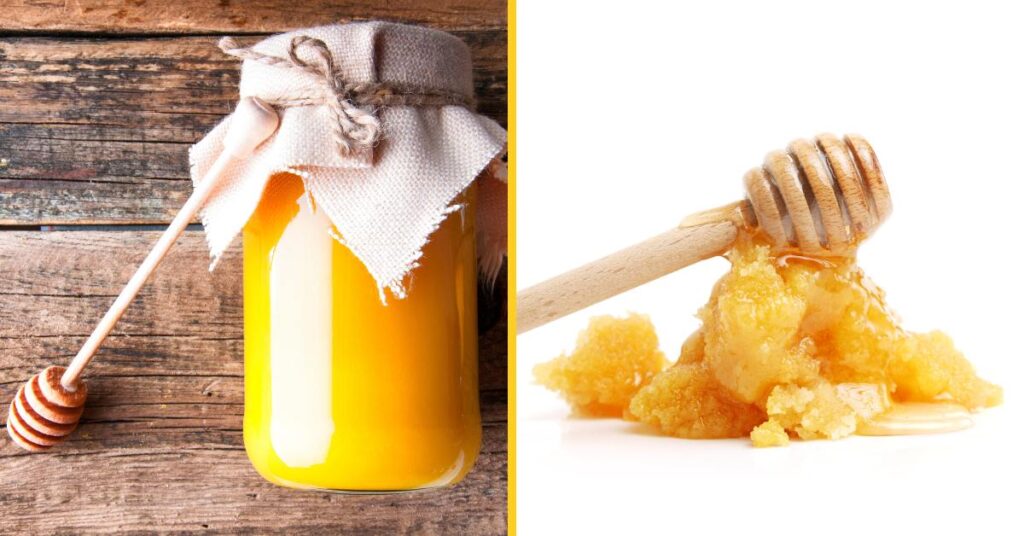
To return crystallized honey to its liquid state, you can gently warm it. Here’s how to do it:
- Water Bath Method:
- Place your glass jar of crystallized honey in a pot.
- Fill the pot with enough water to come halfway up the sides of the jar.
- Heat the water on a stove over low to medium heat.
- Let the water heat up gradually and warm the honey. Stir the honey occasionally to help even out the heat distribution.
- Be careful not to overheat as high temperatures can degrade the quality of the honey. Ideally, the temperature should not exceed 104°F
- Avoid Microwaving: Using a microwave for warming honey is generally not recommended, as it can unevenly heat the honey and potentially overheat some portions, thus diminishing its natural qualities.
- Be Patient: The process of decrystallizing honey can take some time, depending on the extent of crystallization and the quantity of honey.
Remember, crystallization is a natural process and doesn’t diminish honey’s quality or health benefits. By gently warming it, you can restore its smooth, liquid consistency.
Can I Use it Crystalized?
Yes, absolutely! Crystallized honey is still perfectly good to use. In fact, some people prefer it in its crystallized form because it’s easier to spread and less messy than liquid honey. Crystallization does not affect the taste or the nutritional value of the honey.
You can use crystallized honey just as you would liquid honey – in tea or coffee (it will melt with the heat of the beverage), spread on toast, in cooking or baking, or as a sweetener in various dishes. The texture is the only thing that changes; the quality and flavor remain the same.
How Can I Make Sure I am Buying Real Honey?
Here are some tips on identifying real honey:
- Understanding Honey Labels: The key is in the details. Words like “natural” and “pure” don’t necessarily mean the honey is raw or unprocessed. Look for labels that specifically mention “raw” or “unfiltered” if you seek honey in its most natural state.
- The Water Test: Here’s a simple test you can try at home. Drop a spoon of honey into water; real honey will clump and sink, while fake honey dissolves quickly. (Source: New Zeland Honey Company)
- The Texture Test: Runny honey isn’t always a sign of authenticity. Real honey tends to crystallize over time, especially when stored in cooler temperatures. If your honey is perpetually smooth and liquid, it might be overly processed. (Source: New Zeland Honey Company)
- Source Verification: Buying from local beekeepers at farmers’ markets can be a reliable way to ensure you’re getting the real deal. These beekeepers are often proud to share their harvesting practices.
- Beware of Ultra-Clear Honey: Overly clear honey might have been filtered extensively, stripping away beneficial nutrients and pollen.
Remember, authentic honey is not just a sweetener; it’s a nutritional powerhouse. Choosing real honey supports your health, the bees, and the environment.
So, Which Jar of Honey Should I Choose?
Armed with knowledge, making the best choice for your health and taste buds depends on your needs. Here are some factors to consider:
- Choose Raw and Unfiltered: For maximum health benefits, go for raw, unfiltered honey. It preserves most of the natural enzymes and antioxidants. If you prefer your honey a little cleaner, choose raw filtered.
- Consider Organic: If environmental impact and purity are your concerns, the best organic honey options are worth the investment. It ensures that the bees forage in pesticide-free environments.
- Local: Local honey supports your community’s beekeepers and may also provide allergen-fighting benefits specific to your area.
- Store Properly: Keep your honey in a cool, dry place. To prevent crystallization, avoid refrigerating it. If crystallization occurs, gently warm the honey to return it to a liquid state.
- Mindful Consumption: While honey is healthier than refined sugar, it’s still high in natural sugars. Consume it in moderation.
- Explore Varieties: Don’t hesitate to experiment with different types of honey, like Manuka or clover, to enjoy diverse flavors and benefits.
In the end, whether you choose raw unfiltered honey vs organic honey or even organic raw unfiltered, remember that each type has its unique qualities and benefits. Your choice should align with your personal health goals, environmental concerns, and flavor preferences.
Our Favorite Honey Brands
1. Nate’s 100% Pure Organic Raw & Unfiltered Honey
2. Honest Raw Honey
3. Bee Harmony Honey
4. Y.S. Eco Bee Farms
5. Raw Monofloral Manuka Honey
6. New Zealand Honey Co. Manuka Raw Honey
Well, that was A LOT about honey. Choosing the best honey, whether considering the benefits of raw, unfiltered honey vs. organic honey or the sustainable practices behind organic honey, is a personal journey. It’s about aligning with your health needs, environmental values, and taste preferences.
I hope this guide helps you select that perfect jar of honey that adds sweetness to your life and aligns with your values and wellness goals. Do you still have questions about honey? Let me know in the comments!🍯
Related Posts:
GMO vs Organic Banana Matchup: Which is the Better Buy?
The Bear’s Secret: Unraveling Carmy’s Healthy Homemade Sprite Recipe
